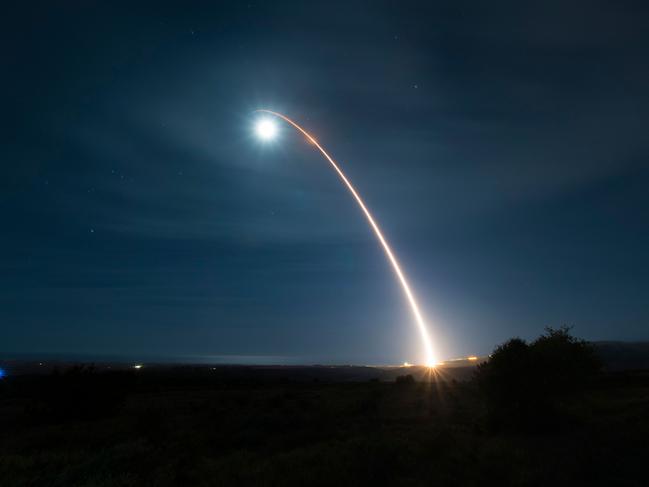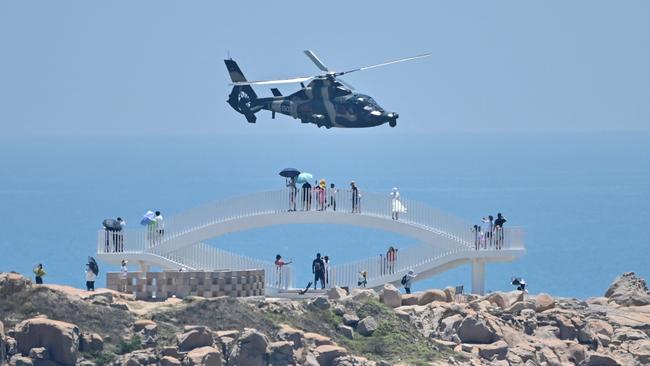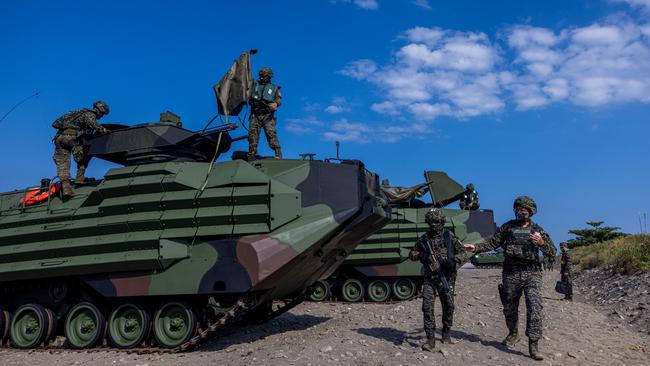US fires 1970s-era nuclear-capable missile into the Pacific after China threat
The US launched an intercontinental ballistic missile 6,760 kilometres from California into the Pacific in a nuclear flex to Russia and China.
National
Don't miss out on the headlines from National. Followed categories will be added to My News.
The United States used one of its oldest pieces of military technology to show its nuclear-forces are ready following Russia and China’s aggressive moves.
The long-range intercontinental ballistic missile, capable of carrying nuclear warheads, landed in the western Pacific after being launched from the US west coast.
The operation had been delayed twice in response to Russia and China’s aggressive moves over Ukraine and Taiwan.
The US Air Force announced the Minuteman III intercontinental ballistic missile was fired off just after midnight local time early Tuesday.
It launched from the Vandenberg Space Force Base in California and travelled 6,760 kilometres to the Kwajalein Atoll in the Marshall Islands, more than half the distance between the US west coast and Beijing.
The missile carried a test re-entry vehicle, which in a strategic conflict could be armed with a nuclear warhead.

The Minuteman III ICBM used in the test first became operational in the early 1970s, and will continue until it’s phased out from 2029 to the mid 2030s.
The 400 that remain in operation are scheduled to be replaced by the next generation LG35A Sentinel, which will be in operation for the next 50 years until 2075.
The test showed “the readiness of US nuclear forces and provides confidence in the lethality and effectiveness of the nation’s nuclear deterrent,” a US military statement said.
The test was originally scheduled in March but was put off to avoid adding to tensions over Russia’s February 24 invasion of Ukraine.
It was postponed a second time at the beginning of August as military tensions soared over China’s test launches of multiple ballistic missiles and live-fire exercises in reaction to the visit of the top US politician, Nancy Pelosi, to Taiwan.

“As China engages in destabilising military exercises around Taiwan, the United States is demonstrating instead the behaviour of a responsible nuclear power by reducing the risks of miscalculation and misperception,” White House national security spokesman John Kirby said at the time, explaining the postponement.
Colonel Chris Cruise, the 576th Flight Test Squadron Commander, said the launch verified the accuracy and reliability of the ICBM weapon system, while providing data to ensure an effective nuclear deterrent.

“Make no mistake - our nuclear triad is the cornerstone of the national security of our country and of our allies around the globe,” he said, referencing the US’s three-pronged nuclear force of heavy bombers, submarines and ICBMs.
“This scheduled test launch is demonstrative of how our nation’s ICBM fleet illustrates our readiness and reliability of the weapon system.”
Task Force commander Maj. Armand Wong said the launch was in the planning for between six months to a year.
“Our test launches are scheduled well in advance and are not reactionary to world events,” he said.
More Coverage
Originally published as US fires 1970s-era nuclear-capable missile into the Pacific after China threat




